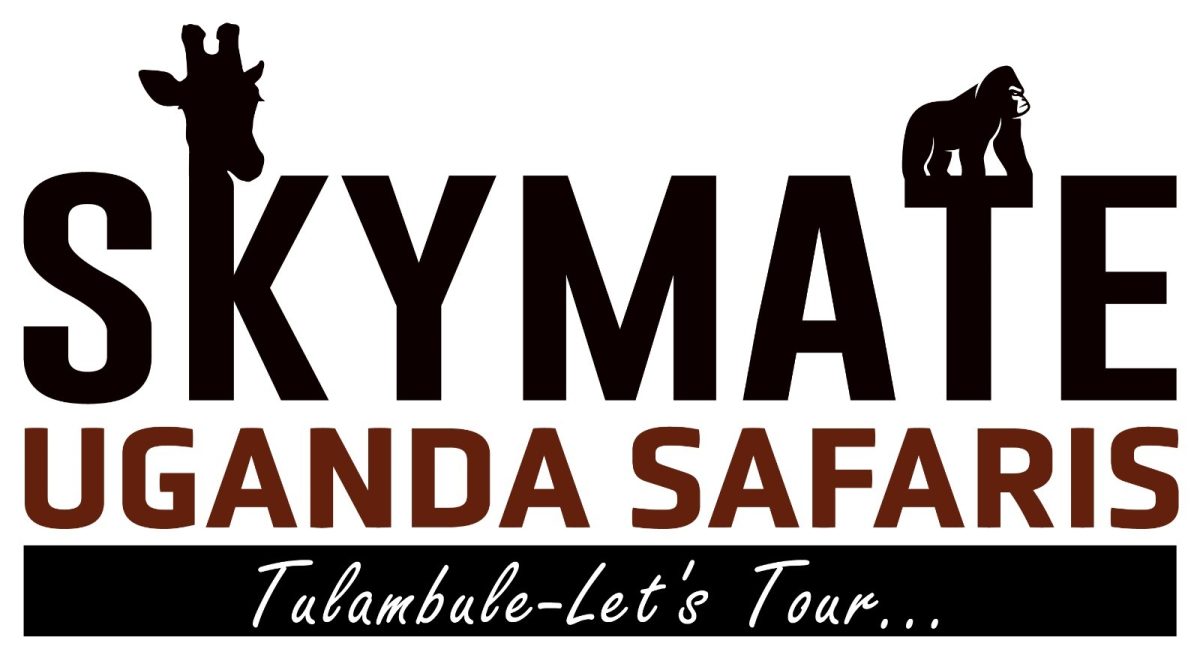A Little Bit About Murchsion Falls
Murchison Falls National Park is the largest, oldest and most exciting savannah game park in Uganda. Attractions include the explosive waterfall for which the park is named and the wildly tropical stretch of the Nile River that bisects the park as it flows toward Lake Albert.
When it comes to wildlife viewing, a Uganda safari that combines Murchison Falls with the nearby Ziwa Rhino Sanctuary and Budongo Forest Reserve offers you with a decent chance of seeing all the Big 5 animals as well as chimpanzees and shoebills in the course of one short, affordable trip.
Murchison Falls National Park is best know for magnificent Murchison Falls – the world’s strongest waterfalls on River Nile. The falls were named by Sir Samuel Baker during his exploration of Uganda in the 19th Century. Baker named the falls Murchison after the famous British geologist Sir Roderick Murchison, who incidentally believed Africa to be a geologically boring continent.
Notable visitors to Murchison Falls National Park include Ernest Hemingway, President Theodore Roosevelt and several British royals. Sir Winston Churchill also visited Murchison Falls which may have been what led him to declare Uganda the ‘Pearl of Africa’. The 1951 film The African Queen starring Humphrey Bogart was filmed on Lake Albert and the Nile river in Murchison Falls National Park.
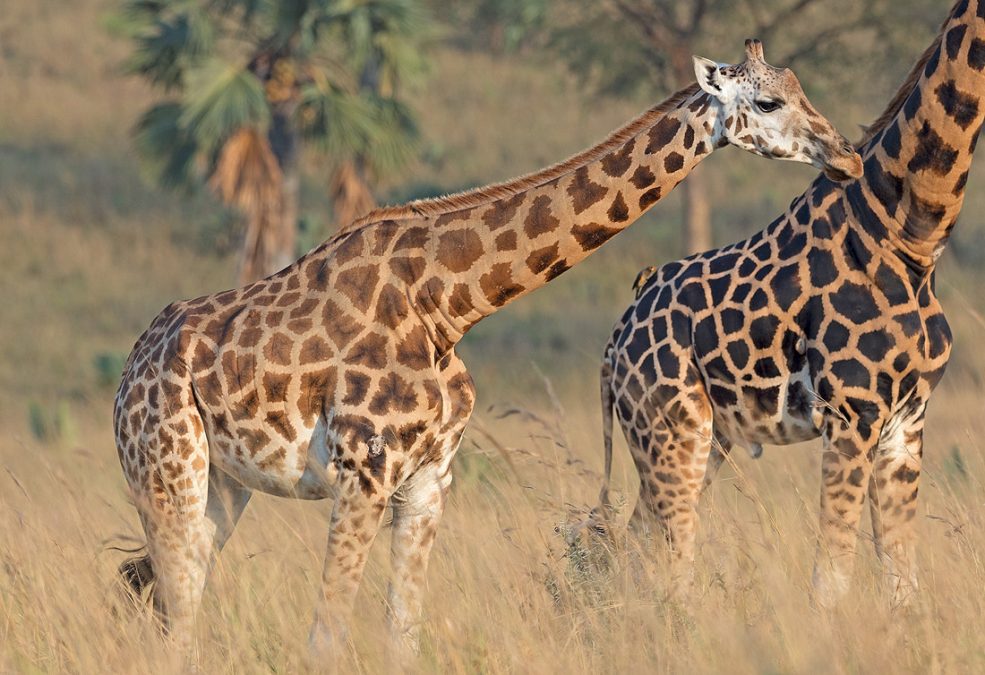
4-Day Murchison Falls Wildlife Safari: Big Five, Big Game & Chimp
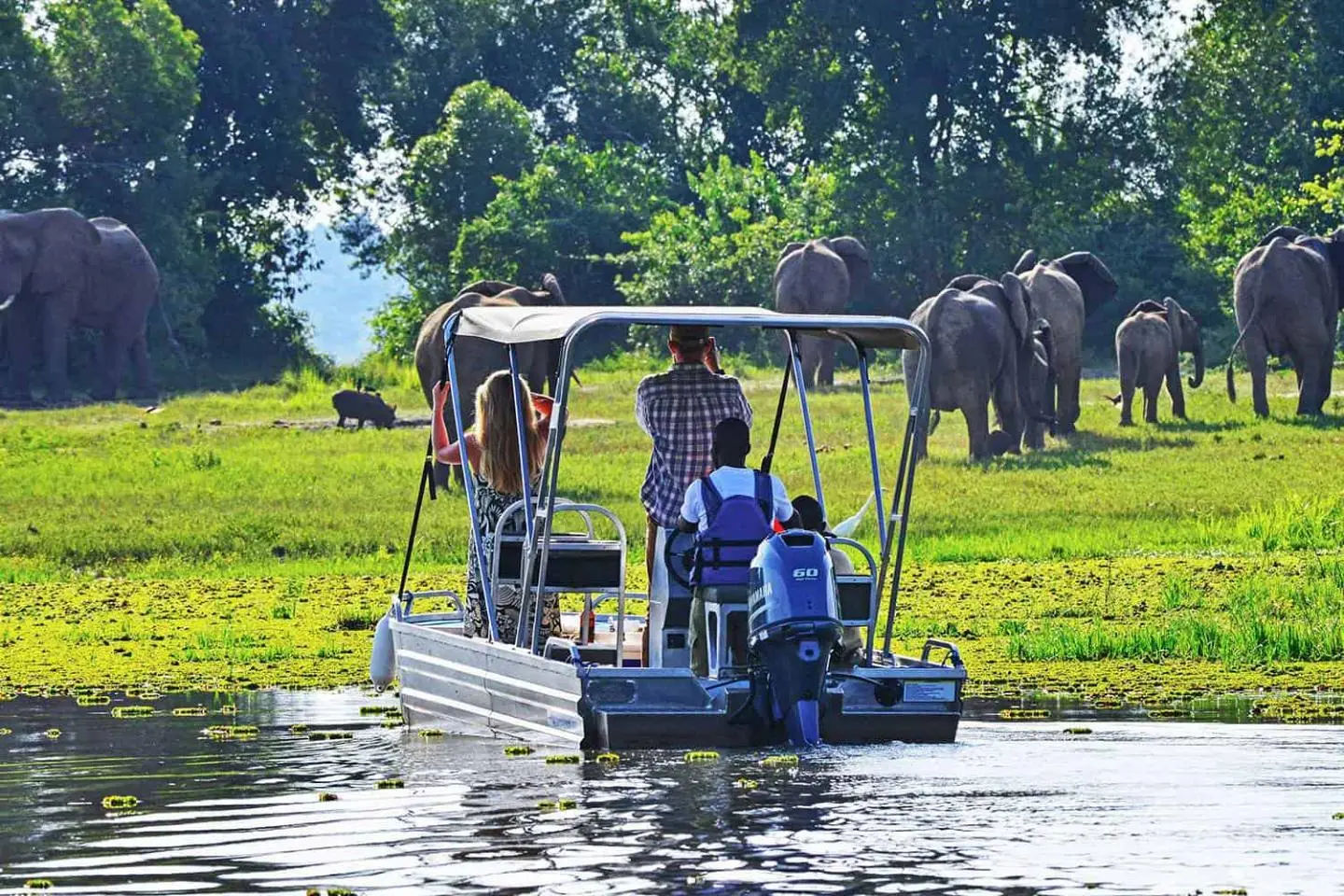
2 Days Murchison Falls Safari & Ziwa Rhino Tracking Adventure
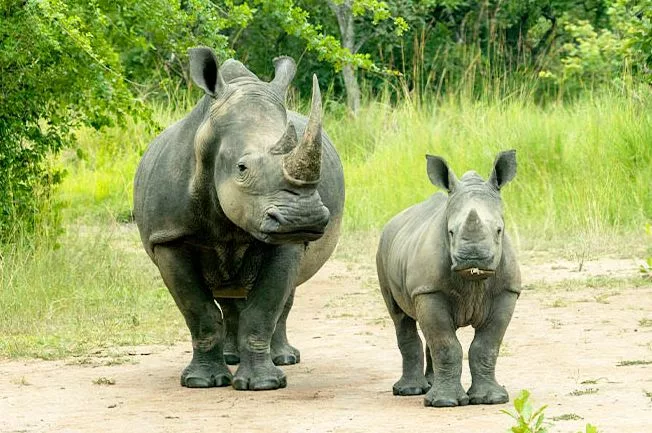
12 Days Uganda Safari, Big Five, Chimps, Gorillas And Culture
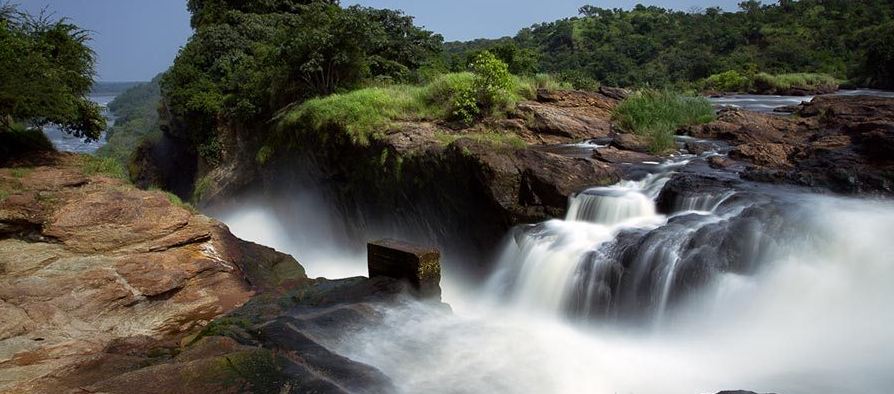
3 Days Murchison Falls Safari, Big Game & Beautiful Scenery
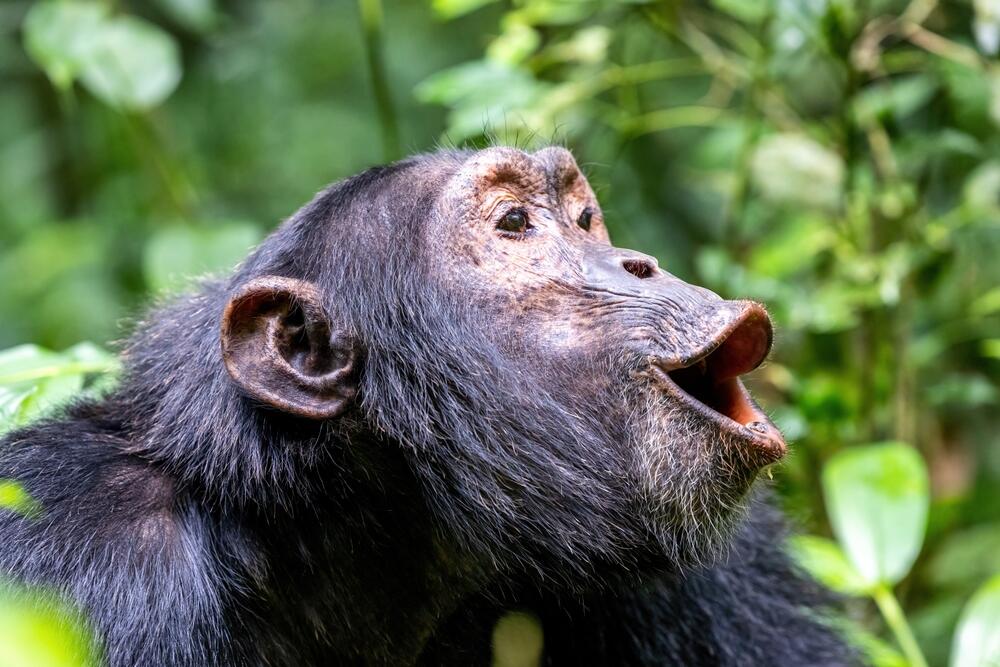
7-Day Uganda Wildlife Safari | Chimps, Gorillas, Big 5 & More!
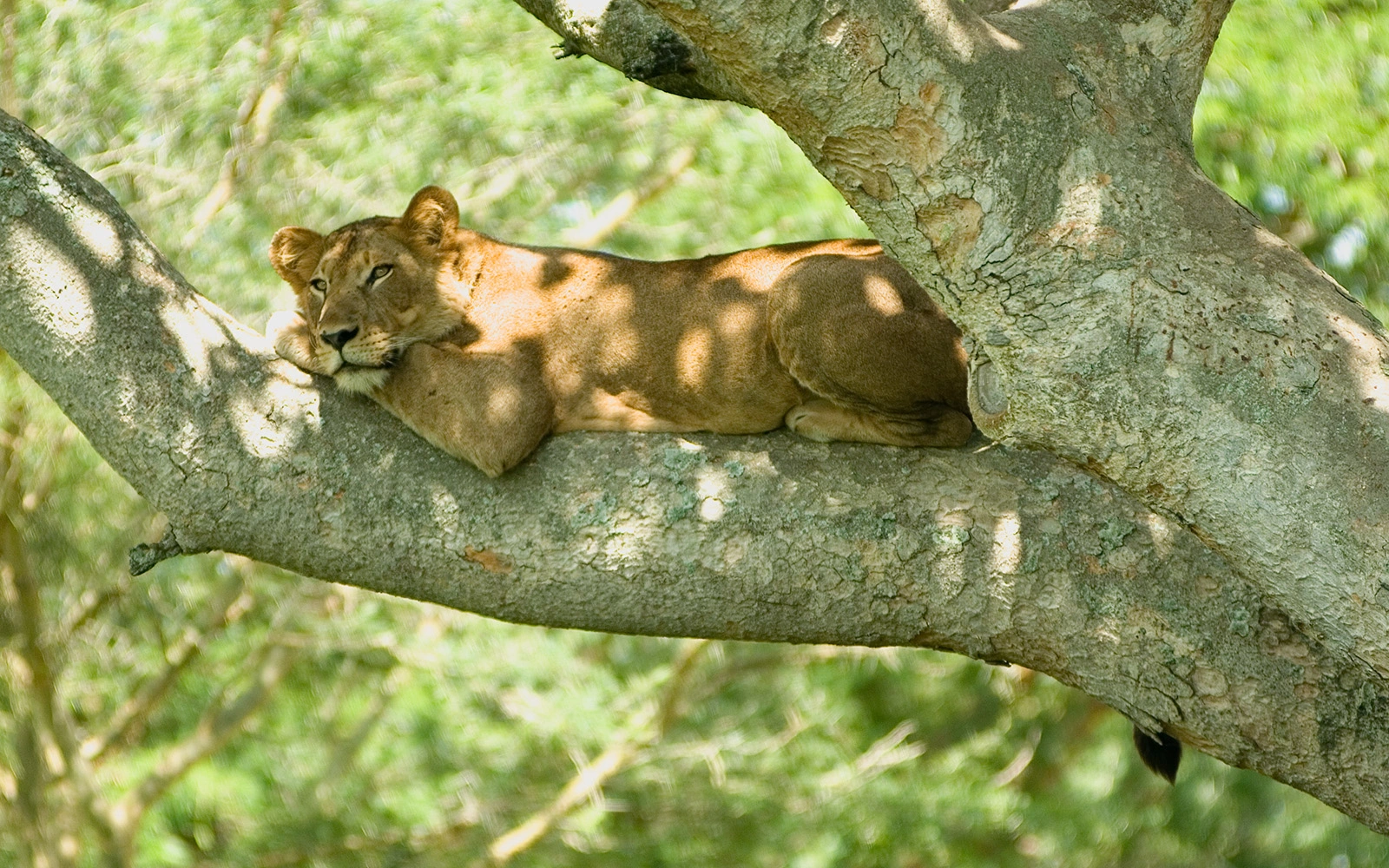
10 Days Uganda Wildlife Safari, gorillas, Chimps & Big Game
Murchison Falls National Park Entrance Fee
- Foreign Non-Resident (Adult): US Dollars 45
- Foreign Non-Resident (Children): US Dollars 25
- Foreign Resident (Adult): US Dollars 35
- Foreign Resident (Children): US Dollars 15
- East African Citizen (Adult): UGX 25,000
- East African Citizen (Children): UGX 10,000
- Ugandan Pupils and/ or Students (Groups): UGX 3000
- Tertiary Institutions/ Universities: UGX 5000
Size And Landscape
Murchison Falls National Park covers about 3,840 km2 of wilderness on both sides of River Nile west of Karuma Falls and east of Lake Albert. It’s part of the greater Murchison Falls Conservation Area. The park’s landscape is dominated by savannah-woodland habitat dotted with beautiful Borassus palm trees. It also encompasses vast tracts of tropical forests, swathes of grassland, and wetland habitats.
To the south, west and east, it adjoins Bugungu Wildlife Reserve (782 km2), Budongo Forest Reserve (825 km2), and Karuma Falls Wildlife Reserve (720 km2). These reserves are diverse ecosystems in their own right, but serve a vital function as buffer zones between the game park and the nearby local communities.
Location Of Murchison Falls National Park
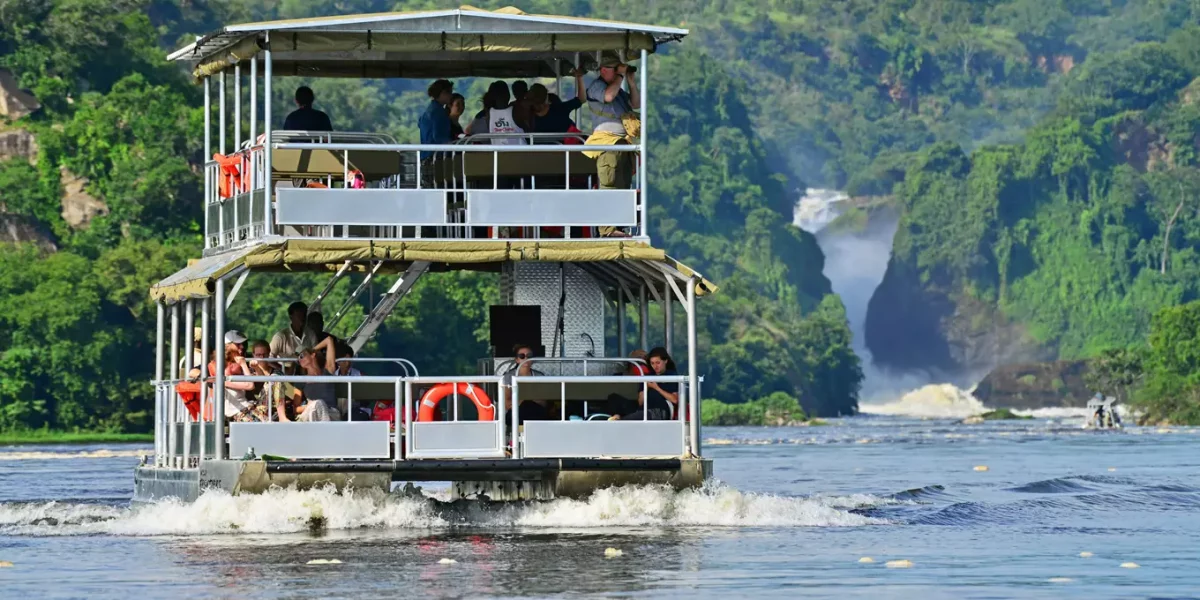
Murchison Falls National Park is located in northwestern Uganda, about 300km by road from Kampala. The park straddles the Ugandan districts of Buliisa, Nwoya, Kiryandongo, and Masindi.
The driving distance from Masindi, the nearest large town, to the national park is about 72 km. Murchison Falls National Park is a great place for a short weekend getaway or short Uganda tours from Kampala or Entebbe. And because of its impressive scenic beauty abundant wildlife, it is a perfect place to celebrate special occasions like honeymoons, engagements, and birthdays
A Brief History Of Recovery
In the first half of the 20th century, Murchison Falls National Park and its surroundings was a hunting playground for the rich. In 1909 – President Theodore Roosevelt of the United States of America visited Murchison Falls as part of the most lavish hunting safari of all time.
By the end of his year-long East African safari, the Smithsonian-Roosevelt Africa Expedition had killed and collected 11,400 animal specimens for the Smithsonian Institution.
In 1952 – hunting activities became regulated in the area. As animal populations recovered, the then Bunyoro-Gulu Game Reserve became Murchison Falls National Park.
In 1960s – Murchison Falls was one of the premier destinations for wildlife safaris in Africa, receiving more than 60,000 visitors every year.
In 1972 – with the rise of Idi Amin’s despotic reign, however, the populations of wild animals in Murchison Falls National Park were greatly reduced by poaching and uncontrolled hunting. Rhinos were killed off entirely and other animal numbers suffered equally at the hands of desperate civilians and soldiers.
In 1979 – although Amin was overthrown, it was to be another 20 years before the Uganda Wildlife Authority was able to restore the core tourism area of the park. Recovering visitor numbers supported the painstaking work of restoring the park to its former glory.
Though poaching, especially snares set for bush-meat, has remained a serious threat on the outer fringes, concerted efforts have been made to make sure there is investment in surrounding communities.
In addition to everything from education initiatives to employment schemes, 20% of the revenue from park fees is fed back to the local community. In short, the restoration of Murchison Falls National Park has built a solid foundation for the park’s long-term future.
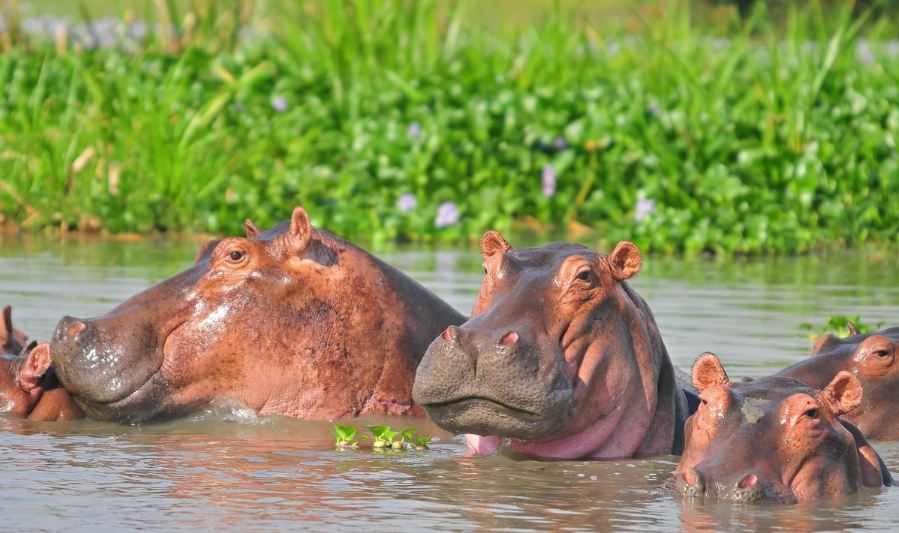
Best Time To Visit Murchison Falls National Park
Murchison Falls is a year-round safari destination and there is no truly bad time to visit.
In terms of wildlife viewing, marginally the best time for a Uganda safari is the main Dry season, which runs from December to February. These months are also good for bird watching tours, as Palearctic migrants are present in Uganda from November to April.
However, January and February can be very hot, with midday temperatures routinely soaring over 33°C/91°F. The Wet season, which typically begins in March and runs to November, tends to be more comfortable climatically, and the scenery is lusher/greener from June onwards.
June and July are optimal in terms of relatively low temperatures and rainfall. If you’ll also be trekking gorillas and/or chimps in Uganda, you might want to factor in the best months for these activities. The best time for gorilla trekking is from December to February and June to August. Chimps in Kibale Forest are easiest to track from December to March and June to July.
Best Time to visit Murchison Falls
How to Get to Murchison Falls National Park?
Your Uganda safari to Murchison Falls can start from Entebbe or Kampala. From there you can get to Murchison Falls by road. Your drive will take around 6 hours.
However, along the way, you’ll enjoy some incredible scenery and you can visit the Ziwa Rhino Sanctuary, a protected area that is home to Uganda’s only wild rhinos.
The fastest way to get to Murchison Falls is by taking a small plane from either Entebbe International Airport or Kajjansi Airstrip in Kampala to a small airstrip located directly inside the park. The flight takes about 1½ hours.
Major Attractions in Murchison Falls Park
1. The Nile River And Murchison Falls
Murchison Falls National Park is divided by the historic Nile River. River Nile which has its source at Lake Victoria in Jinja the longest river on Earth and one of the Natural Wonders of Africa. The Murchison Falls marks Nile’s entry to the Great African Rift Valley. These dramatic falls are a jaw-dropping sight to behold. Here the Nile which is over 50 meters wide is forced through a narrow gorge just about 8 meters wide.
It then plunges 45 meters to what has been termed as the devil’s cauldron below, forming a plume of spray marked by a thunderous roar and a permanent rainbow. The Murchison Fall is the world’s most powerful waterfall! Every second, the equivalent of 200 bathtubs full of water is forced through the tiny gorge. The falls are also lined by verdant plant life, can be viewed on foot from the top or at a more leisurely pace in a boat from below.

A Little History About The Murchison Falls
The Murchison Falls is first mentioned to in the writings of John Speke, who upon visiting Karuma Falls to the east in 1862 was told that a few other waterfalls lay downriver, ‘mostly of minor importance’ but ‘ one within ear sound… Two years later, partly to fulfill the promise they had made to Speke, Samuel Baker and his wife Florence Baker became the first Europeans to explore the stretch of the Nile between Lake Albert and Karuma Falls. As they were paddling about 30 km east of the estuary, Samuel Baker wrote:
“We could distinctly hear the roar of water and upon rounding the corner, a magnificent site burst upon us. On either of the river were beautifully wooded cliffs rising abruptly to a height of about 300 feet. Rocks were jutting out from the intensely green foliage. And rushing through a gap that cleft exactly before us, the river, contracted from a grand stream, was pent up in a passage of scarcely 50 yards in width.
Roaring furiously through the rock-bound pass, it plunged in one leap of about 120 feet (36m) perpendicular into the large abyss below. The fall of water was snow-white, which has a superb effect as it contrasted with the dark cliffs that walled the water, while the graceful palms of the tropics and wild plantation perfected the beauty of the view. This was the greatest waterfall of the Nile, and in honor of the distinguished president of the Royal Geographic Society, I named it the Murchison Falls, the most important object through the entire course of the river”.
2. animals in Murchison Falls National Park
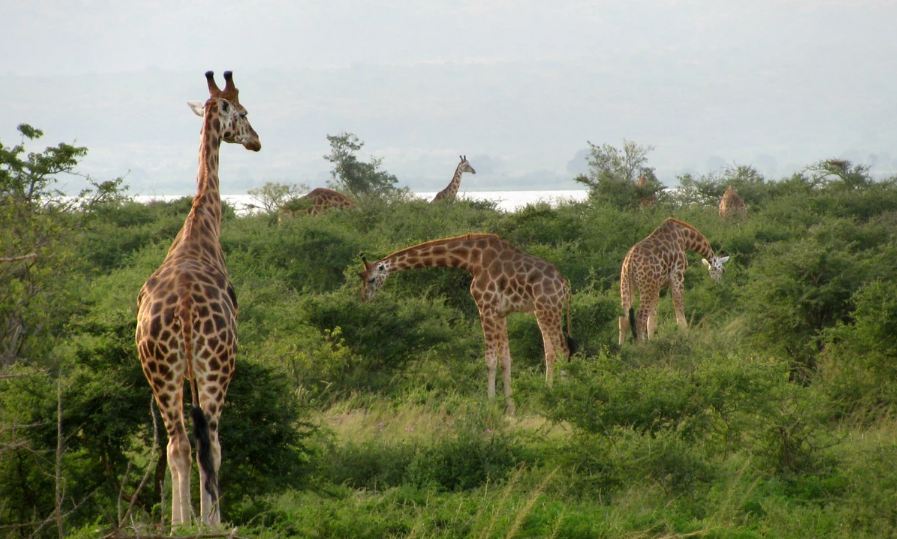
You can expect to see a good variety of African wildlife on a Murchison Falls safari. The national park is home to over 76 mammal species including 4 of the Big Five (lion, leopard, elephant, and buffalo). You are almost certain to see elephant and buffalo – along with plentiful hippos, crocodiles and waterbirds – on the popular boat trip to the base of Murchison Falls. Lions are often seen on game drives north of the Nile River, and leopards are present but more elusive. Other common wildlife includes:
- Rothschild’s giraffe
- Defassa waterbuck
- Uganda kob
- Oribi
- patas monkey
- Olive baboon
Farther afield, the main road to Murchison Falls bisects Budongo Forest, one of the most reliable chimpanzee trekking sites in Uganda. A worthwhile short diversion en route to Murchison Falls is Ziwa Rhino Sanctuary, where rhino (the only member of the Big Five not present in the national park) can be tracked on foot.
3. birds in Murchison Falls National Park
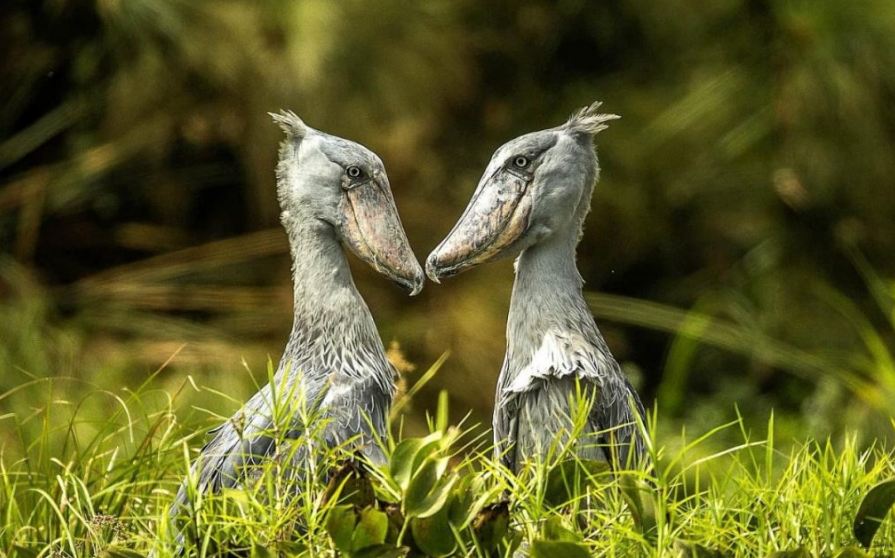
Over 450 bird species can be found in the Murchison Falls National Park! Because of this incredible diversity, the park is one of the best places Uganda bird watching tours. For birders and non-birders, the prehistoric Shoebill is high on the list of must-sees, and the swampy Nile Lake Albert Delta is one of the best places to spot one. Other fantastic bird species you can see Murchison National Park include;
- African skimmer
- Abyssinian ground hornbill
- Secretary birds
- African fish eagle
- Blue-throated roller
- Beaudouin’s snake-eagle
- Blue swallows
- Cassin’s spinetail
- Chocolate-backed kingfisher
- Northern carmine bee-eater
- Great blue Turaco
- Rock pratincole
- Goliath heron
- Red-throated Bee-eater
- Grey-crowned crane
- Saddle-billed stork
- Nahan’s francolin
- Senegal Coucal
- Pel’s Fishing Owl
- White-thighed hornbill
- Red-winged Grey Warbler
- Black-headed lapwing
- African Darter
- African Dwarf Kingfisher
- Brown twinspot
- Black-headed Gonolek
activities in Murchison Falls National Park
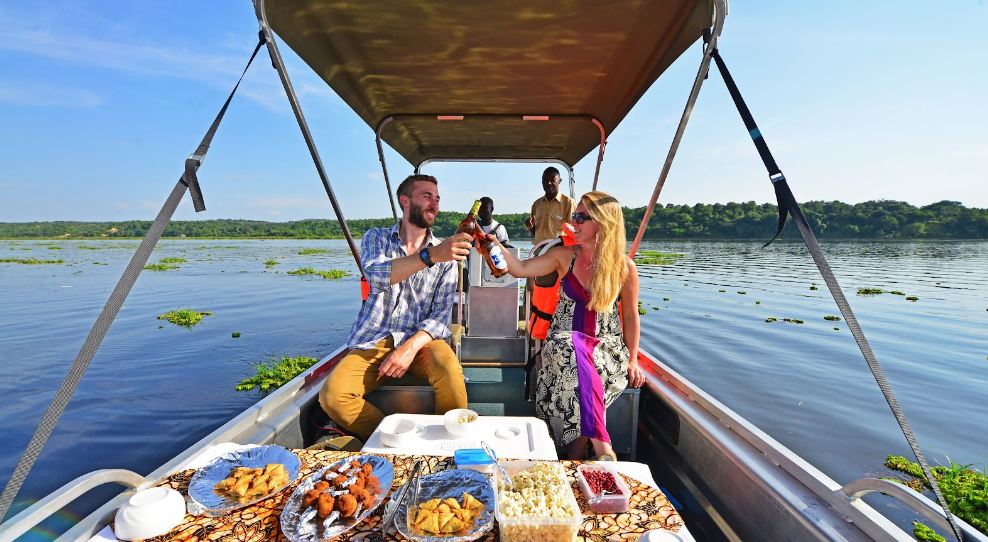
From game drives, boat safaris, hiking, sport fishing, chimp trekking, bird watching, sightseeing, bush breakfast, camping to sun-downers, Uganda’s Murchison Falls National Park offers unforgettable experiences. Here is a brief description of the best Murchison Falls National Park activities. You can contact us for cost of each activity and more details.
- Boat Cruise to the Bottom of the Murchison Falls
- Nile Delta Lake Albert Boat Cruise
- Day Game Drives
- Night Game Drive
- Top of Murchison Falls Visit
- Bird Watching tours in search of shoebills and other special birds
- Chimpanzee Tracking in Budongo Forest
- Nile River Fishing
- Local community village tours
- Nature walks
- Photography
- Rhino tracking on foot in the nearby Ziwa Rhino Sanctuary
Accommodation in Murchison Falls National Park

Murchison Falls National Park offers basic yet pleasant camping sites and lodges for the more budget-restricted traveller. There are also a handful of lodges in Murchison Falls National Park that offer mid-range and luxury accommodation and facilities.
- Paraa Safari Lodge – Luxury
- Bakers Lodge – Luxury
- Nile Safari Lodge – Luxury
- Murchison River Lodge – Midrange
- Pakuba Safari Lodge – Midrange
- Fort Murchison Safari Lodge – Midrange/Budget
- Red Chill Rest Camp – Budget
- Hornbill Safari Lodge – Budget
- Heritage Safari Lodge – Budget
FAQs About Murchison Falls National Park
1. How Many Days Do You Need Murchison Falls Park?
The most usual duration for a stand-alone Murchison Falls National Park safari tours is 3 days, but 2-day and 4-day safari itineraries are also offered by many Uganda tour operators. Given that the drive there and back requires at least 6 hours, a 2-day safari will be very rushed and is not recommended unless you absolutely cannot extend the trip any longer.
A 3-day safari Murchison Falls National Park safari will be more relaxed as it effectively doubles the time you spend in the park. In our view, 4 days is even better, especially if you want to track chimpanzees in Budongo Forest and visit Ziwa Rhino Sanctuary along the way.
2. How Much Does A Murchison Falls Safari Cost?
The typical price of a cheap 2- to 4-day Murchison Falls National Park safari is around US$190 to US$250 per person per day. Midrange safari can cost from US$ 250 to US$ 300 per day and a luxury safari can cost from US$ 350 to US$ 600 per day. This will usually include accommodation, meals, transport, and park entrance and activity fees.
It will exclude drinks, tips and any activities listed as optional. Expect to pay slightly more for a package that includes chimp trekking in Budongo Forest Reserve. Request a Quote
